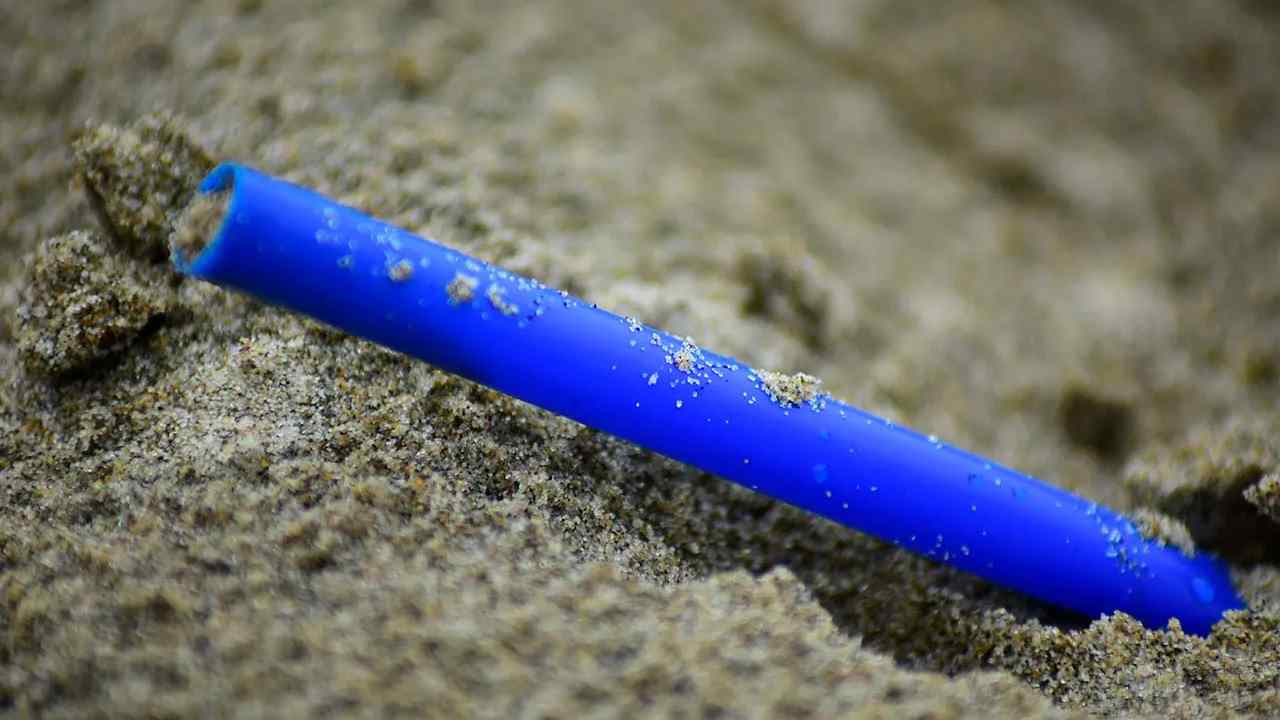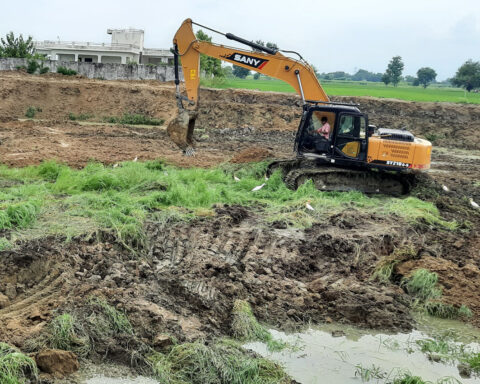India’s attempt to regulate single-use plastic (SUP) kicked in from July 1, 2022, with the government imposing a ban on select items. It is part of the larger effort to reduce the use of plastic in the long term. But making India plastic pollution-free is not going to be an easy task.
The responsibility of halting the usage of SUP is not limited to one stakeholder. For instance, it would involve all the stakeholders in the production and consumption value chain starting with raw materials, plastic manufacturers, corporates—especially FMCG companies who use plastic for packaging—national, state and local governments, and consumers for this ban to be effective. Although a majority of the states has chosen to impose a ban on plastic bags, the unorganized and unscientific method of disposal of SUPposes a far greater challenge to controlling plastic pollution.
India generates more than 15,000 tonnes of plastic waste a day. A study by the Central Institute of Petrochemicals Engineering & Technology and the Central Pollution Control Board (CIPET-CPCB) in 60 major cities suggests 66% of plastic waste generated consists of high-Density Polyethylene (HDPE) and Low-Density Polyethylene (LDPE) materials, which are primarily used for the manufacture of plastic carry bags. Since most of the plastic waste originates from urban households, a comprehensive recycling strategy is the need of the hour.
The ban that has come into effect from July 1 cannot be perceived as India becoming free of SUP, because a large number of consumable items such as beverages, drinking water and numerous food items will continue to be sold in packaging which fits the definition of SUP. On August 12, 2021, a government notification defined SUP as “plastic item intended to be used once for the same purpose before being disposed of or recycled”. In the same notification, the Union Ministry of Environment, Forest and Climate Change had also outlined a phase-out plan for 21 select single-use items. But a large number of items that are packaged in SUP were excluded from the list.

For starters, it appears that the government has tried to identify items which have low utility and high littering potential
SUP items banned from July 1 in India
- Earbuds with plastic stems
- Plastic sticks for balloons
- Plastic flags
- Candy sticks made of plastic
- Ice-cream sticks made of plastic
- Thermocol (expanded polystyrene) for decoration
- Plates made of plastic
- Cups made of plastic
- Glasses made of plastic
- Forks, knives, spoons, and trays made of plastic
- Plastic straws and stirrers
- Wrapping or packaging film around invitations, sweet boxes and cigarette packets
- Plastic or PVC banners of less than 100 micron thickness
- Carry bags of less than 75-micron thickness (this will be revised to 120-micron thickness from December 31, 2022)
- Non-woven plastic with less than 60 GSM (grams per square metre)
For starters, it appears that the government has tried to identify items which have low utility and high littering potential, and has given the industry a reasonable time frame to phase them out. But many items have been left out, which include plastic carry bags, which would still be available, though the thickness has been regulated to be above 75 microns until December 31, 2022, and above 120 microns from then onwards. Similarly, banners made from polyvinyl chloride (PVC) have also been allowed but the thickness should not be less than 100 microns.
Selective ban
Among the list of banned SUP items, there is major resistance to the banning of plastic straws. A number of companies manufacturing FMCG products have pointed out that plastic straws are an inherent part of the product packaging and have low littering tendency. Companies such as ParleAgro, Amul, Dabur, PepsiCo, and the All-India Plastic Manufacturers Association (AIPMA) are seeking an exemption of six to 12 months until the ban, citing issues like unavailability of alternatives, economic unfeasibility, and demand-supply gap, which will increase the cost of their product packaging.
The first announcement for phasing out SUP was made on August 15, 2019, by Prime Minister Narendra Modi. Roughly two years later, in March 2021, the draft notification was released and the deadline for phase-out, proposed in the draft notification, was January 1, 2022. In the final notification released in August 2021, the deadline was extended to July 1, 2022, based on the request from the plastic industry and AIPMA. In effect, the government had already granted a six-month extension to the industry to move away from single-use plastic items listed for phase-out.
The identification of SUP items to be phased out was done on the basis of a report by an experts committee constituted by the Department of Chemicals and Petrochemicals (DCPC), under the direction of the Union Ministry of Chemicals and Fertilisers. The committee comprised policymakers, scientists, academicians and researchers in the field of plastic and allied materials. The assessment was conducted by DCPC by comparing two pillars—the utility index of a particular type of SUP and its environmental impact.

According to a report by the Centre for Science and Environment, “Plastic RecyclingDecoded”, based on industry estimates, plastic packaging (flexible and rigid) contributes almost 60% of the total plastic waste generated out of which over 40% falls under the seventh category that is non-recyclable.A lot of this packaging is discarded within minutes or days of being used. The report states that the amount of plastic waste generated in the country is uncertain.
In terms of recyclers, an industry estimate found that the number of formal recycling units in the country has gone down by 97% between 2018 and 2019
In terms of recyclers, an industry estimate found that the number of formal recycling units in the country has gone down by 97% between 2018 and 2019, while the quantum of plastic recycled in the same period has increased by a meagre 8.3%. Data shared by CPCB also fails to establish the plastic waste processing and recycling capacity of the country.

Experts point out that plastic packaging waste has not been listed for phasing out. It was proposed to be collected and managed in an environmentally sustainable way through the extended producer responsibility (EPR) of the producer, importer, and brand owner (PIBO), according to the Plastic Waste Management Rules, 2016. Industry estimates say India used 18.45 million tonnes of plastic in 2018, while the plastic produced in the same time period amounted to 17 million tonnes. The global standard is that 1% of all the plastic generated is biodegradable and can be composted. This means, India needs to collect 170,000 tonnes of post-consumer compostable plastic and should have industrial composting units to deal with this stream of plastic waste. Awareness around compostable plastic is very low. It is perceived that compostable plastic can be littered or added to a home or community compost pit that will reduce it to simpler compounds like carbon dioxide and water vapour, which is incorrect.
The Plastic Waste Management Rules, 2016, prohibit the use of plastic bags below a thickness of 50 microns in cities. The rules also introduced a fee that would be collected through pre-registration of the producers, importers and vendors of plastic carry bags. However, state legislation varies from partial to complete bans on carry bags.
Implementation hurdles
The implementation of these rules has been rather dismal at the state level. The latest report on the implementation of plastic waste rules by the CPCB categorically says that most of the states have not established an organised system for plastic waste management, which results in widespread littering in towns and cities. There is a need to measure, quantify, assimilate and devise a strategy specific for every city according to its diversity, experts say, while pointing out that there is a need to make it mandatory to charge the customer for picking up a plastic bag for their purchases.

But the Plastic Waste Rules Amendment, 2018, has not included the clause for explicit pricing of plastic bags from the 2016 rules. This comes as a surprise as pricing the bags was starting to bring about slow change.A study by the Delhi School of Economics in 2011 on “Consumer Responses to Incentives to Reduce Plastic Bag Use” said that in developing countries, which have little enforcement capacity, a blanket ban on SUP may not be the best solution. Instead, 82% of consumers would switch from plastic bags to using their own bags if they were explicitly charged for the bags. The success of imposing a plastic bag fee has also been established in a number of cities globally.
Despite these practices in other countries, a recent study has shown that the quantity of microplastics in the waters around Antarctica are five times greater than presumed uptil now. The Antarctic Ocean covers around 8.5 million sq. km and represents 5.4% of Earth’s oceans. The marine ecosystem in the Antarctic Ocean is vulnerable and krill (small, shrimp-like crustaceans) make up a large and important component of food for whales, seals and penguins inhabiting this area. Krill mistake microplastics for food; it is potentially poisonous for them, thus putting the entire marine ecosystem at risk.
Microplastics stem from the erosion of plastic materials and are smaller than a grain of rice, even invisible to the naked eye
According to British researchers, up to 500 kg of microbeads from personal care products and 25.5 billion synthetic fibres enter the waters per decade, resulting from tourism, fishing, and scientific activities in the area. It is, however, still unknown whether microplastics flow there from other oceans.
Microplastics stem from the erosion of plastic materials and are smaller than a grain of rice—sometimes even invisible to the naked eye. The researchers found an average of 29 particles per litre of melted snow. They identified 13 types of plastics with the most common being polyethylene terephthalate (PET), mostly used in soft drink bottles and clothing. This was found in 79% of the samples.
News reports indicate that 20 companies around the world are the source of more than half of all single-use plastic discarded globally. One of the world’s largest publicly traded international oil and gas companies tops the list—contributing 5.9 million tonnes to global plastic waste—closely followed by some US chemicals companies and then Chinese ones. A total of 100 companies are responsible for 90% of global SUP production.
Close to 60% of the commercial finance funding of single-use plastic production comes from just 20 global banks. A total of $30 billion of loans from these institutions has gone to the sector since 2011 and 20 asset managers hold over $300 billion worth of shares in the parent companies of single-use plastic polymer producers. Of this, $10 billion is directly linked to SUP polymer production.

























